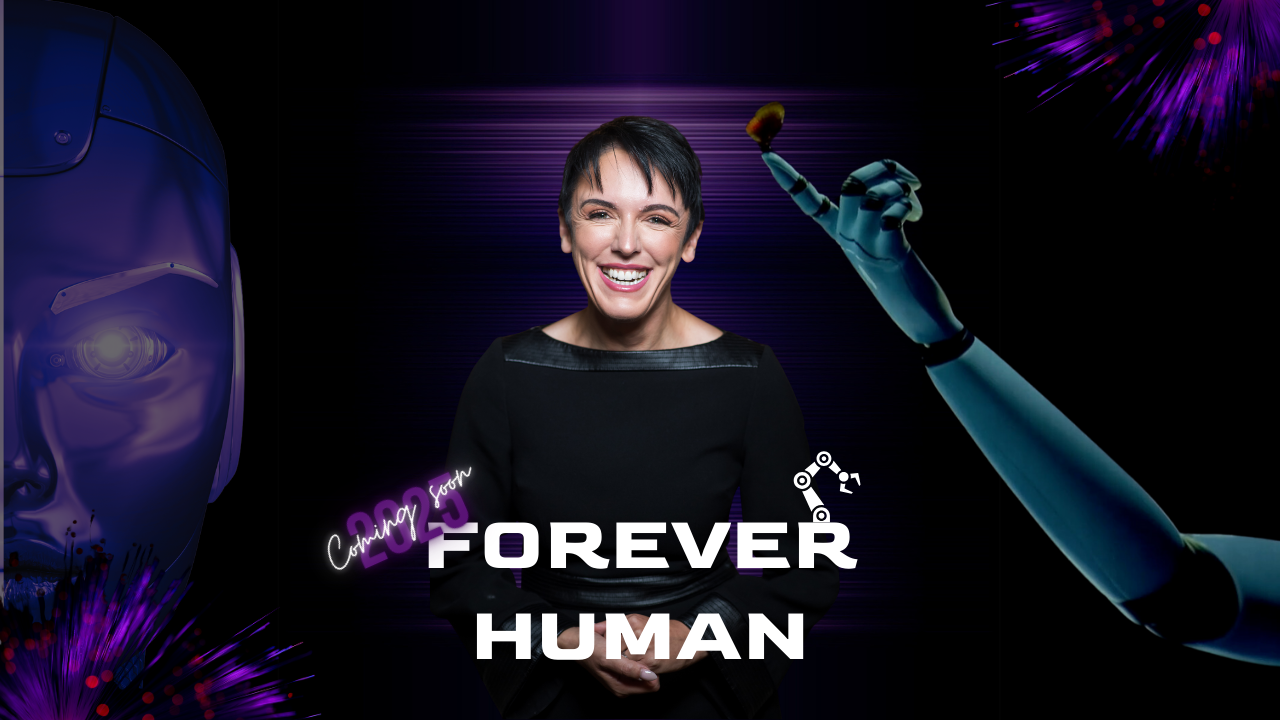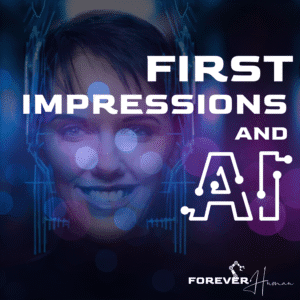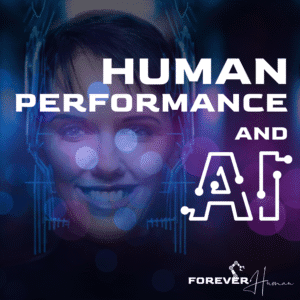How exactly does AI influence workplace behavior and reshape our professional lives?
We’ve arrived in a world where artificial intelligence not only assists in mundane tasks but also shapes the very fabric of how we interact and work with each other. As AI technologies continue to evolve, they’re not just automating processes—they’re revolutionizing workplace behavior and team dynamics in unprecedented ways. For business professionals, leaders, HR managers, and employees eager to stay ahead of the curve, understanding this transformation is crucial.
KEY TAKEAWAYS
AI fosters adaptability and innovation by enabling to focus on strategic decision-making.
Personalized AI tools empower us to learn, grow, and make data-driven decisions with confidence.
AI-powered immersive learning platforms and VR simulations redefine skill-building.
Organizations must address the ethical implications—from privacy concerns to algorithmic bias.
Balancing technology with human values ensures that AI amplifies, rather than diminishes, workplace collaboration.
AI Awareness and Its Impact on Employees
AI is no longer a futuristic concept; it’s woven into the daily operations of businesses, impacting how workplace behavior evolves and employees function. Artificial intelligence changes how employees interact with technology and each other, creating more efficient and dynamic workplaces. Companies are integrating AI to streamline tasks, reduce mundane workloads, and allow employees to focus on more strategic initiatives.
What once required hours of manual data entry and spreadsheet reconciliation can now be accomplished in minutes through AI-powered automation tools. This shift allows employees to move beyond repetitive administrative tasks to focus on analyzing the data and crafting strategic plans that drive business growth.
Or customer service teams that previously spent their time fielding simple inquiries now rely on AI chatbots to handle routine questions, freeing them to engage in more meaningful interactions that can build loyalty and trust.
However, AI’s influence extends far beyond efficiency—it’s redefining the very nature of what it means to work together effectively.
As AI takes on the mundane,
will humans rise to the strategic?
Sylvie di Giusto
AI and the Evolution of Workplace Behaviors
So what does this mean for how we, as humans, behave? AI is reshaping the way we approach work, encouraging leaders and employees to embrace new opportunities while challenging them to adapt in unexpected ways.
AI is driving shifts that make professionals in the workplace more informed, connected, and empowered in their roles. Personalized tools provide actionable insights that help them grow, while immersive learning platforms create dynamic opportunities for exploration and skill-building.
Virtual reality training powered by AI allows employees to practice complex scenarios, such as conflict resolution or technical procedures, in a risk-free environment, boosting confidence and expertise.
Collaboration platforms integrated with AI help teams stay connected by automatically scheduling meetings based on availability, summarizing discussion points, and even assigning action items—all while fostering seamless communication across remote and hybrid setups.
Real-time feedback tools give employees the opportunity to adapt and improve on the fly, making performance evaluations a continuous, growth-oriented process rather than an annual formality.
All these changes foster a sense of curiosity and innovation, driving individuals to stretch beyond their comfort zones. However, this increased reliance on AI can also lead to certain challenges—professionals may become less reflective, less patient, and less accountable in their roles, as instant feedback and convenience overshadow deeper introspection and long-term strategies.
Are we shaping AI to complement us—or letting it shape who we become?
Sylvie di Giusto
The Downside of AI Technology on Human Behavior
While AI brings immense potential to empower professionals, its rapid integration into the workplace also introduces challenges that affect work place behavior at its core. As convenience and instant feedback become the norm, professionals may find themselves relying too heavily on technology, diminishing the reflective and deliberate qualities that are crucial for long-term success.
AI’s ability to provide instant answers and predictive analytics can discourage professionals from engaging in deeper critical thinking. For example, instead of exploring multiple approaches to a problem or brainstorming creative solutions, employees might default to AI-generated recommendations without questioning underlying assumptions. This lack of reflection can stifle innovation and lead to decision-making that lacks nuance or originality. Over time, the habit of pausing to consider broader implications or alternative perspectives may erode, leaving teams dependent on surface-level solutions.
The immediacy of AI-powered systems, such as chatbots or predictive tools, sets an expectation for instant results. Professionals accustomed to quick answers may struggle when faced with delays or situations requiring patience and perseverance. For instance, sales teams using AI to prioritize leads might grow frustrated when a longer engagement is necessary to build trust with a high-value client. This impatience can hinder the cultivation of meaningful relationships and lead to rushed decisions that compromise quality for the sake of speed.
AI’s role in automating processes and decision-making can blur lines of responsibility. When algorithms are tasked with making predictions or recommendations, professionals might defer accountability, attributing outcomes—whether positive or negative—to the system rather than their own actions. For example, a project manager relying on AI scheduling tools might not take ownership when misaligned priorities cause delays, citing the technology as the issue instead of addressing human miscommunication. This diffusion of accountability risks undermining trust and integrity within teams.
For organizations, understanding these evolving behaviors is essential. Only by embracing AI not only as a technological advantage but as a cultural transformation can they create environments where technology complements human ingenuity rather than replacing it. This balance is where the true power of AI lies—helping employees reach their potential without sacrificing the traits that make them human.
AI gives us more power to act—but are we losing the power to think?
Sylvie di Giusto
Navigating AI’s Impact on Human Traits
AI is reshaping workplace behavior in ways that are both empowering and challenging, creating a duality of “more” and “less” that organizations must navigate thoughtfully.
Increased access to AI tools has made employees more informed, selective, and curious about their roles and responsibilities. Data-driven dashboards and predictive insights empower them to take ownership of their tasks and make confident decisions. At the same time, the nature of instant solutions and automation can foster environments where employees become less focused and less patient. The urgency created by AI’s speed can erode the depth of communication, strategic thinking, and accountability that are essential for a thriving workplace.
The key for leaders is to lean into the “more” without allowing the “less” to overshadow human connection.
Are we growing with AI or just growing dependent on it?
Sylvie di Giusto
ACADEMIC INSIGHTS
HOT OF THE PRESS
MDPI | 2024
AI and Its Role in Shaping Organizational Work Practices and Cultural Transformation
OECD | 2024
The Impact of AI on the Workplace
MDPI | 2024
The Role of AI in Improving Workplace Well-being
Wall Street Journal
Will AI Help or Hurt Workers?
News.com.au
‘Embarrassing’: The huge downfall to AI
Reuters
Leaders risk sleepwalking towards AI misuse
FREQUENTLY ASKED QUESTIONS
How does artificial intelligence impact organizational behavior?
Artificial intelligence can greatly impact organizational behavior by automating routine tasks, analyzing data to make informed decisions, and improving overall efficiency. It can also enhance communication within teams and help streamline processes for better collaboration, ultimately shaping workplace behavior in meaningful ways.
How is AI affecting the workplace?
AI is revolutionizing the workplace by introducing new technologies like chatbots, virtual assistants, and predictive analytics. These tools can help employees work more efficiently, improve decision-making processes, and provide valuable insights for strategic planning. As a result, workplace behavior evolves, with teams adapting to a more data-driven and collaborative environment.
Is AI in the workplace ethical?
Ethical concerns surrounding AI in the workplace include issues related to data privacy, bias in algorithms, and the potential for job displacement. These issues directly influence workplace behavior, as employees may experience shifts in trust, accountability, and adaptability when interacting with AI systems. Thus, it's essential for organizations to implement transparent AI practices, prioritize data security, and ensure fairness in decision-making processes.
What are the potential risks of implementing AI in the workplace?
Job displacement is a major concern, as automation can render certain roles redundant, leading to unemployment or necessitating employee reskilling. Additionally, data privacy issues arise because AI systems require extensive data, raising questions about the handling of personal and sensitive information. There’s also the danger of bias and discrimination; AI trained on biased data may perpetuate or worsen existing prejudices, resulting in unfair employee treatment. Moreover, the opacity of AI decision-making can leave employees in the dark about how decisions affecting them are made.
Does techno-invasion lead to employees' deviant behaviors?
While AI can enhance productivity and efficiency, it can also lead to employees feeling overwhelmed or stressed due to constant monitoring or fear of being replaced by technology. This shift in workplace behavior may result in deviant behaviors such as increased absenteeism, lower job satisfaction, or resistance to change. Organizations need to address these concerns to maintain a positive work environment.



